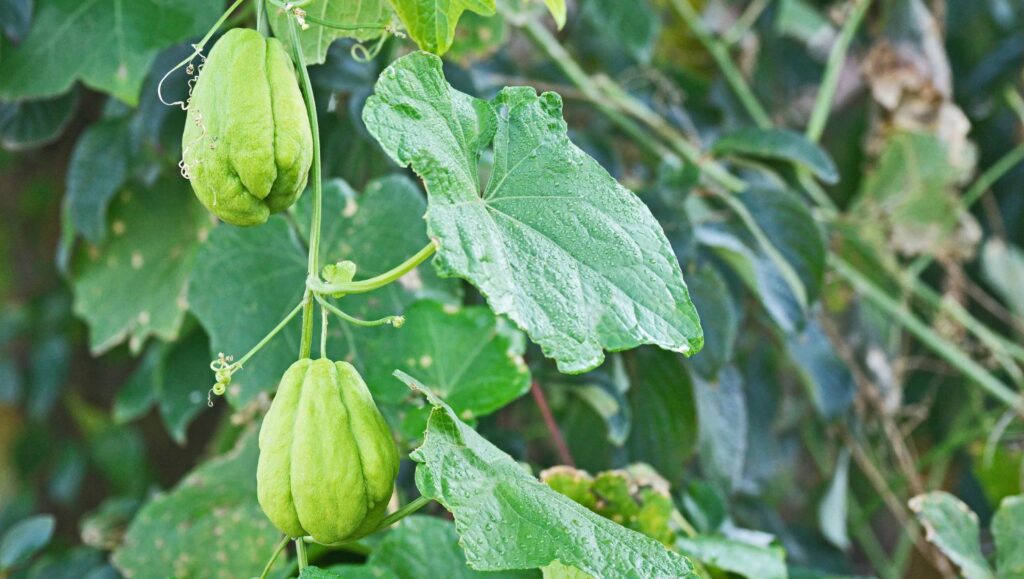A significant number of homeowners dream of enhancing their outdoor environments by introducing vibrant greenery, especially through the elegant addition of pergolas. While earlier discussions focused on the top flowering plants that thrive on pergolas, this article will take an exciting turn by diving into the art of nurturing delicious fruits!
Integrating fruiting vines into your pergola serves a dual purpose: it not only creates a welcoming shaded outdoor sanctuary perfect for unwinding and entertaining, but it also allows you to savor the delightful experience of fresh, homegrown fruit. In the subtropical climate of Brisbane, a wide variety of fruiting vines thrive, producing delicious harvests that beautify your backyard with stunning natural greenery and refreshing shade, effectively transforming your outdoor area into a tranquil oasis.
It is essential to recognize that not all fruiting vines are ideal for pergolas. Some varieties, such as kiwi vines, require a robust structure to support their heavy growth patterns, while others, like passionfruit, grow rapidly and necessitate consistent pruning to maintain their shape and overall health.
Below is a detailed guide that outlines the top fruiting vines particularly well-suited for pergolas in Brisbane, including insights on their growing requirements and critical tips to help ensure that healthy, productive plants thrive in your garden.
1. Passionfruit (Passiflora edulis) – The Premier Choice for Pergola Aesthetics and Fruit Production
Best for: Brisbane gardens, rapid growth, delightful fruit production, and fostering pollinator-friendly environments
Passionfruit is an outstanding choice for adorning a pergola, showcasing lush green foliage, captivating purple and white blooms, and sweet, tropical fruit that tantalizes the taste buds. This fast-growing tendril climber can envelop a pergola completely within a single growing season, providing a quick enhancement to your outdoor space.

Essential Growing Conditions for Successful Passionfruit Vines
- Sunlight: Requires full sun exposure, needing at least 6 hours of direct sunlight daily to achieve optimal growth and fruit yield.
- Soil: Prefers well-drained, slightly acidic soil with a pH level between 6.5 and 7.5, enriched with organic matter for the best results.
- Watering: Needs deep watering 2-3 times weekly, especially during dry spells, to maintain consistently moist soil and support healthy growth.
- Fertilizing: A high-potassium fertilizer is recommended every 4-6 weeks throughout the growing season to maximize productivity and fruit development.
- Pruning: Regular pruning after fruiting is crucial to encourage fresh growth and prevent excessive overgrowth, keeping the vines in check.
Top Passionfruit Varieties Perfectly Suited for Brisbane Gardens
- Nellie Kelly (Grafted Purple Passionfruit) – Well-known for its robust disease resistance and impressive productivity, making it a gardener’s favorite.
- Panama Red & Panama Gold – Produces larger fruit, exhibits heat tolerance, and thrives exceptionally well in subtropical conditions.
- Sweet Granadilla (Passiflora ligularis) – Delivers aromatic fruit but prefers slightly cooler temperatures for optimal growth, making it a unique addition.
Pro Tips for Successfully Cultivating Passionfruit Vines on a Pergola
- Train young vines along the pergola beams to promote uniform growth and coverage across the structure, enhancing visual appeal.
- Regularly prune excess growth to improve airflow and sunlight penetration, which are vital for the health and productivity of the vines.
- Plant in proximity to a fence or trellis to provide additional support, ensuring the vines have a sturdy structure to climb and flourish.
2. Kiwi Fruit (Actinidia deliciosa) – A Sturdy Climber Requiring Strong Support Structures
Best for: Large, robust pergolas that can withstand the weight of significant growth and provide ample shade
Kiwi vines are celebrated for being vigorous and heavy growers, necessitating a very sturdy pergola to adequately support their substantial weight. As deciduous plants, they shed their leaves in winter, allowing sunlight to filter through when shade is less critical, making them an excellent choice for year-round gardening and fruiting.

Key Growing Conditions for Optimal Kiwi Fruit Production
- Sunlight: Thrives in full sun exposure, ensuring it receives adequate light for healthy growth and fruit production throughout the growing season.
- Soil: Requires well-drained, fertile soil enriched with compost to support vigorous growth and fruit development.
- Watering: Needs regular watering, particularly during dry spells, to prevent stress on the plant and ensure optimal health.
- Fertilizing: Application of organic compost and slow-release fertilizer in spring will nourish the plant, aiding in robust growth and fruit yield.
- Pruning: Regular pruning is essential to effectively manage growth and enhance fruit yield, keeping the vines productive and healthy.
Understanding Kiwi Pollination Needs for Successful Fruiting
Kiwi vines are dioecious, meaning they possess distinct male and female plants. To ensure fruitful pollination and successful fruiting, it is necessary to have at least one male plant for every 4-5 female plants, promoting optimal pollination rates and maximizing fruit production in your garden.
Best Kiwi Varieties for Brisbane’s Climate and Conditions
- Hayward Kiwi – The most popular variety, needing a male pollinator for fruit production to occur, ensuring a bountiful harvest.
- Bruno Kiwi – Recognized for its early fruiting and vigorous growth, making it a favorite among gardeners looking for quick yields.
- Issai Kiwi – A self-pollinating variety, ideal for smaller gardens with space limitations, allowing for easier management.
Effective Strategies for Growing Kiwi Fruits on a Pergola
- Install strong wooden or steel support beams to accommodate the vine’s weight, ensuring safety and stability for the structure.
- Space vines at least 3-4 metres apart to allow for adequate spread and airflow between the plants, promoting healthy growth.
- Regular pruning is necessary to manage excessive growth effectively, keeping the vines healthy, productive, and well-shaped.
3. Grapes (Vitis vinifera) – Infuse Your Pergola with Mediterranean Charm
Best for: Traditional garden pergolas that provide shaded outdoor dining and relaxation experiences
Grapes are a fantastic option for pergolas, offering dense shade during the hot summer months, while allowing sunlight to filter through in winter when they shed their leaves. They require seasonal pruning but are generally regarded as low-maintenance once established, making them an appealing choice for many gardeners seeking fruitful vines.

Optimal Growing Conditions for Thriving Grape Vines
- Sunlight: Requires full sun, ideally a minimum of 6 hours of sunlight daily to ensure healthy growth and fruit production.
- Soil: Prefers well-drained sandy or loamy soil that supports root health and prevents waterlogging.
- Watering: Needs deep watering weekly during dry periods to maintain moisture levels, ensuring robust growth.
- Fertilizing: Application of organic mulch and balanced fertilizer in spring is beneficial for nutrient supply.
- Pruning: Essential for removing excess wood and promoting fruit production, ensuring the vines remain healthy and fruitful.
Best Grape Varieties for Gardens in Brisbane
- Flame Seedless – Known for its sweet red grapes, perfect for fresh consumption and snacking, making it a family favorite.
- Sultana (Thompson Seedless) – Ideal for fresh eating or drying, providing versatility in the kitchen and culinary applications.
- Black Muscat – Produces large, juicy fruit with a rich flavor, excellent for crafting dessert wines and gourmet dishes.
Expert Tips for Successfully Cultivating Grapes on a Pergola
- Prune annually to maintain shape and promote fruiting spurs for maximum yield, ensuring a bountiful harvest each season.
- Train vines along pergola beams to achieve uniform coverage and support for healthy growth and an attractive appearance.
- Utilize netting to protect fruit from birds during the ripening season, ensuring a successful and plentiful harvest.
4. Choko (Sechium edule) – A Rapidly Growing, Low-Maintenance Climbing Vine
Best for: Gardeners seeking low-maintenance options and quick coverage for their outdoor pergolas
Choko (also known as chayote) is a fast-growing vine that produces abundant pear-shaped fruit. It requires minimal maintenance and can effectively cover a pergola within just a few months, making it an excellent choice for creating inviting shady areas. Be cautious not to confuse it with the “moth plant,” which is a different species altogether and can cause issues in gardens.

Optimal Growing Conditions for Choko to Flourish
- Sunlight: Thrives best in full sun to partial shade, adapting well to various light conditions and ensuring growth.
- Soil: Requires well-drained, compost-enriched soil that promotes healthy root development for thriving vines.
- Watering: Needs regular watering during dry months to keep the plants adequately hydrated and thriving.
- Fertilizing: Benefits from organic compost and seaweed-based fertilizers to enhance overall growth and fruit quality.
- Pruning: Regular trimming is necessary to control growth and maintain a desirable shape, allowing for optimal production.
Expert Tips for Successfully Growing Choko on a Pergola
- Choko vines tend to spread quickly, so be prepared for frequent pruning to maintain control over their growth and shape.
- Fruits grow on long tendrils, making them easy to spot and harvest when ripe, adding convenience to your gardening.
- This vine can tolerate drier conditions, making it an appropriate option for Brisbane’s climate and reducing watering needs.
Understanding the Key Differences: Moth Plant vs. Choko
Many gardeners in Brisbane cultivate choko (Sechium edule) as an easy-to-manage vine for edible fruit and rapid pergola coverage. However, some may mistakenly grow the moth plant (Araujia sericifera), which is a toxic, fast-spreading vine native to South America and identified as an invasive weed in Queensland. Initially introduced as an ornamental plant, it has since become a significant pest, smothering native vegetation and spreading aggressively across the landscape, causing ecological concerns.
If you’re cultivating choko or other climbing vines, it is essential to learn how to identify and eradicate moth plants before they proliferate and pose a threat to your garden and local ecosystems, ensuring your gardening efforts remain fruitful.
5. Dragon Fruit (Hylocereus spp.) – An Exotic Climbing Cactus for Unique Edible Landscapes
Best for: Unique edible landscapes and gardens designed for low water usage and minimal maintenance
Dragon fruit is a cactus vine recognized for its stunningly vibrant pink or yellow fruit filled with sweet, refreshing flesh. This plant exhibits remarkable drought tolerance, making it an excellent candidate for low-maintenance gardens that thrive in Brisbane’s climate and require minimal irrigation.

Optimal Growing Conditions for Cultivating Dragon Fruit Successfully
- Sunlight: Requires full sun to thrive, ensuring it receives ample light for healthy growth and fruit development.
- Soil: Thrives in well-drained, sandy soil enriched with organic matter to support root health and prevent rot.
- Watering: Minimal; requires deep watering only during dry months, making it very low-maintenance and suitable for water-conserving gardens.
- Fertilizing: Light applications of organic fertilizer are recommended every 2 months to promote growth and maintain health.
- Pruning: Regularly check growth to keep it in check and encourage upward climbing, ensuring optimal space utilization.
Best Dragon Fruit Varieties to Cultivate
- White-fleshed dragon fruit – Offers a mild, sweet flavor, perfect for fresh eating and adding to desserts.
- Red-fleshed dragon fruit – Known for its intense sweetness and high antioxidant content, making it a garden favorite among health-conscious individuals.
- Yellow dragon fruit – Smaller in size but exceptionally sweet, adding diversity and vibrancy to your garden landscape.
Best Practices for Growing Dragon Fruit on a Pergola
- Provide a sturdy trellis or pergola support, as dragon fruit can become quite heavy and requires stability for optimal growth.
- Be aware that flowers bloom at night and are typically pollinated by bats or moths, so timing is crucial for fruit set and successful harvesting.
- Consider hand pollination to increase fruit yield, especially in areas with fewer natural pollinators, enhancing your harvest success.
Choosing the Best Fruiting Vine for Your Pergola
Each fruiting vine offers unique growth habits, weight requirements, and pruning needs. For example, passionfruit is ideal for rapid coverage, while kiwi and grapes necessitate sturdier pergolas to support their vigorous growth. Meanwhile, dragon fruit presents a unique edible option with minimal water requirements, making it perfect for those keen on establishing a low-maintenance garden that still yields delicious fruits.
Are you ready to design the perfect pergola to accommodate your fruiting vines?
Contact Pergolas Brisbane at (07) 3064 0661 for expert assistance on custom pergola design and installation tailored to meet the unique requirements of your garden and enhance your outdoor space.
Best Fruiting Vines for a Pergola in Brisbane – Passionfruit, Kiwi & More
The Article: Fruiting Vines for Brisbane Pergolas: Passionfruit, Kiwi & More first appeared on https://writebuff.com
The Article Fruiting Vines for Brisbane Pergolas: Passionfruit, Kiwi & More Was Found On https://limitsofstrategy.com
The Article Fruiting Vines for Brisbane Pergolas: Explore Passionfruit & Kiwi First Appeared ON
: https://ad4sc.com
Comments are closed